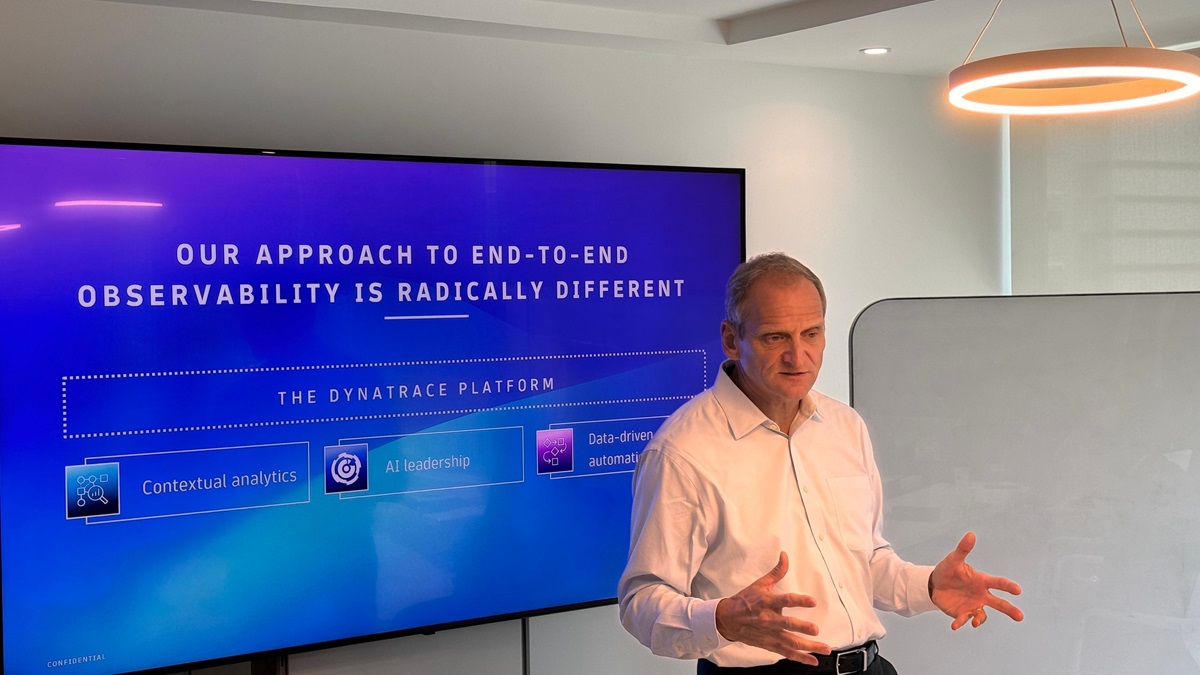In an era where software has become the backbone of modern business, the ability to ensure seamless digital interactions has never been more critical. Enter Dynatrace, a leading provider of observability solutions, is revolutionising how organisations manage and optimise their complex software environments.
Dynatrace, a global company with nearly 5,000 employees, serves over 4,000 largest enterprises and organisations. These customers span diverse industries, including finance, travel, manufacturing, healthcare, and the public sector. All of them share a common need—flawless software.
According to Dynatrace’s CEO, Rick McConnell, the driving force behind Dynatrace’s mission is the increasing complexity of modern software environments. As businesses rapidly adopt cloud technologies and embrace artificial intelligence (AI), the volume and interconnectivity of data have exploded, rendering traditional manual approaches to software management obsolete.
To illustrate this point, Rick shared the example of a leading airline that Dynatrace has worked with. Like many others, this airline relies on a vast ecosystem of applications to support its operations, with as many as 65 applications required for a single aeroplane to take off. The challenge arises when one of these critical applications malfunctions, as it can disrupt the entire system and ground flights.
In such complex environments, traditional manual troubleshooting approaches are no longer viable. Rick highlighted the case of a large airline that would bring dozens of people into a virtual room to try and identify the root cause of an incident, only to have everyone point the finger at another team, saying, “It’s not my problem.” This inefficient process often resulted in prolonged downtime and disruptions to end-user experiences.
Dynatrace’s solution to this challenge is a comprehensive observability platform that combines an integrated data store, sophisticated AI techniques, and automation to deliver unprecedented insights and control over complex software environments.
The integrated data store is a key differentiator, as it allows Dynatrace to aggregate and contextualise various data types, including logs, traces, metrics, and user behaviour, in a single repository. This approach contrasts the siloed, disparate data stores typically found in other observability solutions, which can make it challenging to gain a holistic understanding of software performance.
Dynatrace’s AI capabilities are another crucial component of its offering. The company utilises three distinct AI techniques: causal AI, predictive AI, and generative AI. Causal AI is used to identify the root cause of issues, enabling rapid problem-solving. Predictive AI, on the other hand, anticipates and prevents incidents before they occur, minimizing disruptions to end-user experiences.
To demonstrate the power of Dynatrace’s AI-driven observability, the Rick shared the example of the company’s work with British Telecom (BT). By consolidating 16 different observability tools and deploying Dynatrace, BT experienced a 50% reduction in incidents and a 90% decrease in mean time to repair (MTTR) during the critical iPhone 14 launch. Additionally, BT estimated a cost savings of £28 million over a few years due to the reduced maintenance and triage work required.
Rick emphasised that Dynatrace’s differentiation lies in its focus on delivering “answers, not just data or dashboards.” By leveraging its integrated data store and sophisticated AI, the company aims to enable organizations to avoid incidents altogether, rather than merely reacting to them. This proactive approach is particularly valuable in complex, cloud-based environments, where the manual troubleshooting of issues is often infeasible.
The presentation also touched on the challenges of cloud adoption, particularly in highly regulated industries like financial services and the public sector. While some organizations are eager to embrace the cloud, others face regulatory and compliance hurdles that slow their migration. Dynatrace’s ability to support hybrid environments, where on-premises and cloud-based systems coexist, is seen as a key advantage in addressing the diverse needs of its global customer base.
According to the Rick, the growth of the cloud market is a significant industry trend that is driving Dynatrace’s business. Just two years ago, the combined annual revenue of AWS, Azure, and GCP was approximately $160 billion. Today, that figure has grown to $228 billion, representing a 25% compound annual growth rate.
“The result of this is the cloud is getting bigger and bigger and bigger. And organizations across the globe, even some of those we never thought would move to the cloud, like huge financial institutions, are moving to the cloud,” the Rick noted.
This rapid cloud adoption, coupled with the increasing complexity of software environments, has created a significant market opportunity for Dynatrace. The Rick highlighted that the company’s customers range from small startups to some of the largest organizations in the world, with the level of sophistication required for Dynatrace’s solutions being greatest among the most complex enterprises.
Dynatrace’s innovative approach to end-to-end observability, rooted in an integrated data store and advanced AI techniques, positions the company as a critical partner for organizations navigating the complexities of modern software environments. By enabling businesses to deliver flawless digital experiences and improve productivity, cost-efficiency, and security, Dynatrace is at the forefront of the observability revolution, helping to realize the vision of a world where software works perfectly.
Rick shared his experience meeting with C-level executives from various industry sectors during his trip to the Middle East, noting their enthusiasm for cloud adoption and keen interest in Dynatrace’s solutions. This growing interest positions Dynatrace to capitalize on opportunities in the region, driving its expansion and supporting businesses in their digital transformation with advanced cloud solutions and observability platforms.











